Finger-pointing cacti at Saguaro National Park
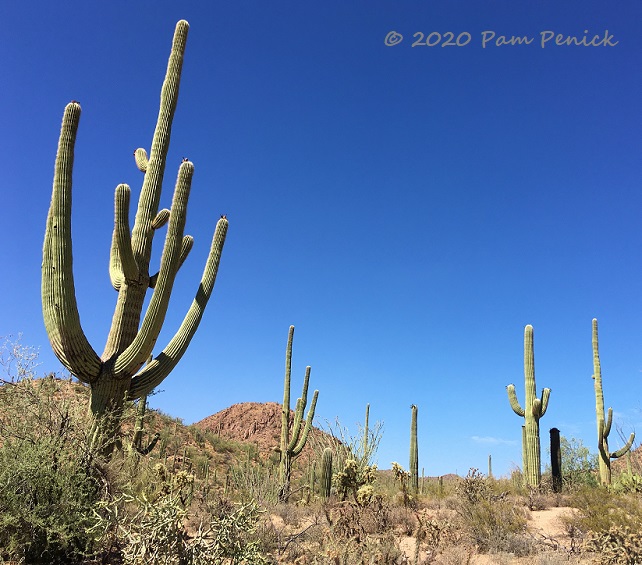
If you’re feeling ticked off about the covid state of the world, Saguaro National Park might be the perfect place to go, since its namesake flora look like they’re giving the finger to the universe.
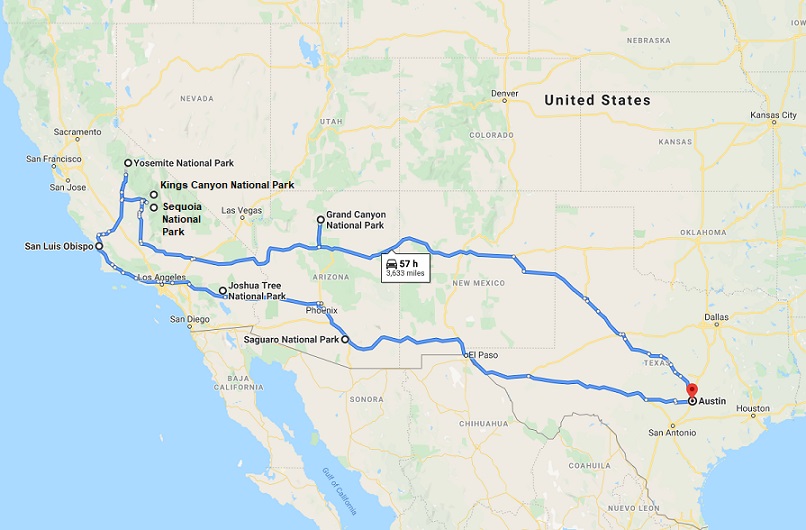
Saguaro was the last park we visited during our family road trip through the Southwest in mid-to-late June. We arrived under a blazing sky, on a 100-degree afternoon, at this Sonoran Desert preserve near Tucson, Arizona.
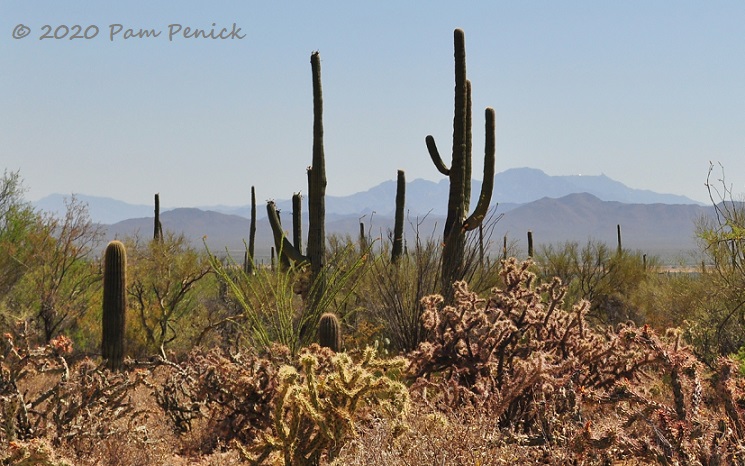
Tucson divides the two districts that make up Saguaro National Park: Rincon Mountain District on the east and Tucson Mountain District on the west. We chose the western district for its density of saguaros and its 6-mile Bajada Loop Drive, which is unpaved but well maintained.
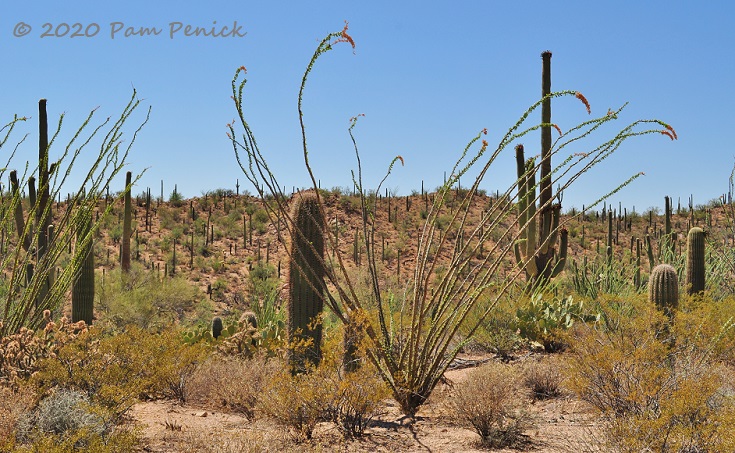
Literally no one was there. With the visitor center closed (as at all the parks we visited) and no one manning even a ticket booth, we drove on in and tucked away our annual parks pass. It was just the saguaros and us.
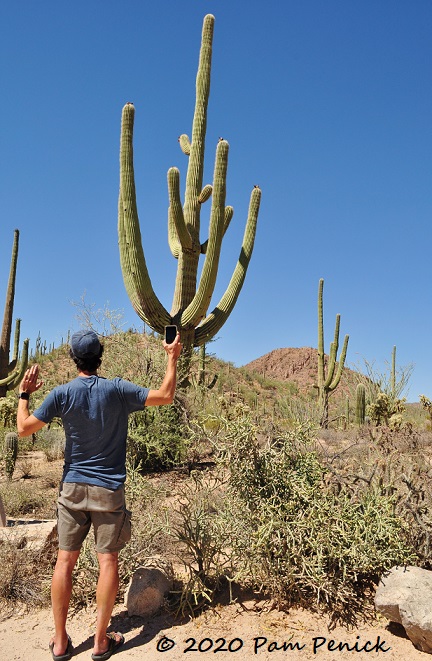
You can’t help thinking of these branching cacti as sort of human-looking. Here’s my husband doing his best saguaro imitation. By the way, if you’re not from this part of the world, saguaro is pronounced sa-WAH-ro. Drop that hard “g.”
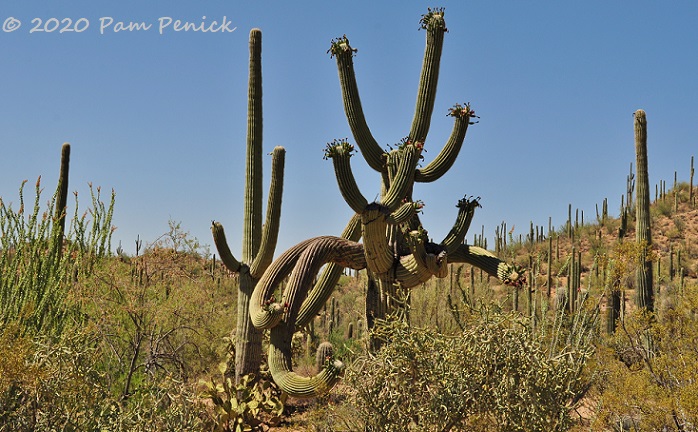
The sagauro (Carnegiea gigantea) is pretty clever about surviving on 10 inches of rain a year. With flesh that’s pleated like an accordion, the saguaro’s stem swells with water sucked up by its roots after a big rain. During dry times, the saguaro contracts as it lives off its stored water reserves. Mature plants full of water can weigh 6 tons. Talk about water weight!
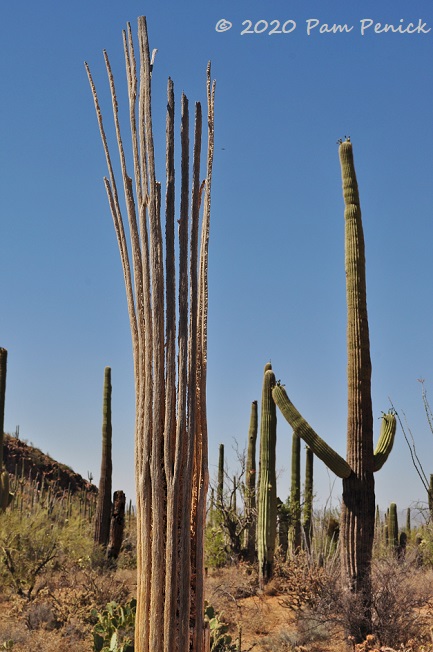
A woody, ribbed skeleton supports all that weight, and when a saguaro dies, the framework may remain standing as a ghostly memorial.
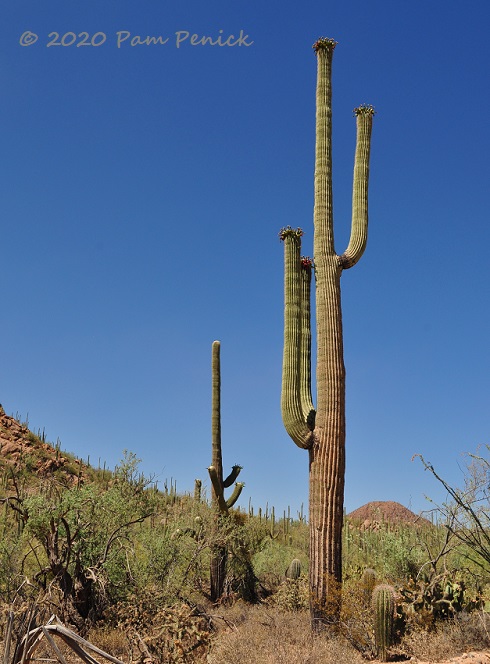
Saguaros can grow 50 feet tall, but they take their time to get that big. They grow only a couple of inches during the first decade, generally under a sheltering “nurse” tree. Another 50 to 100 years may tick by before a saguaro sprouts its iconic branching arms.
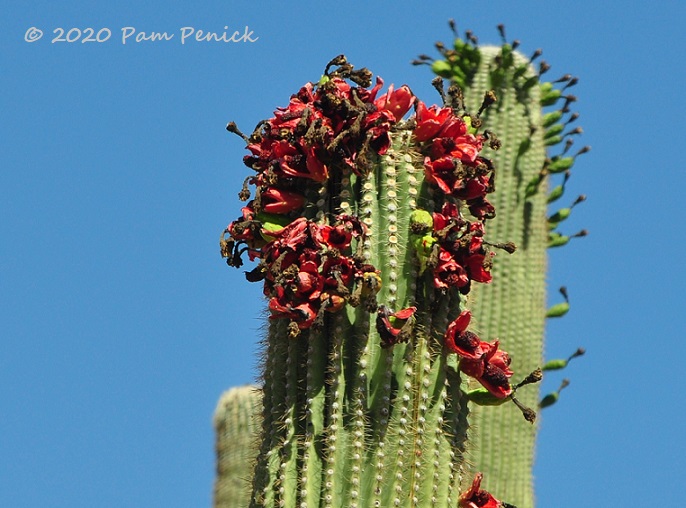
After 35 years, a saguaro has matured enough to flower. Large white flowers open at night in a sort of flower crown atop its head. Bats pollinate the flowers at night and birds and bees in the morning, until the flowers close up in the afternoon. Pollinated flowers mature into red fruits, which look rather Christmasy against the cactus’s green stem.
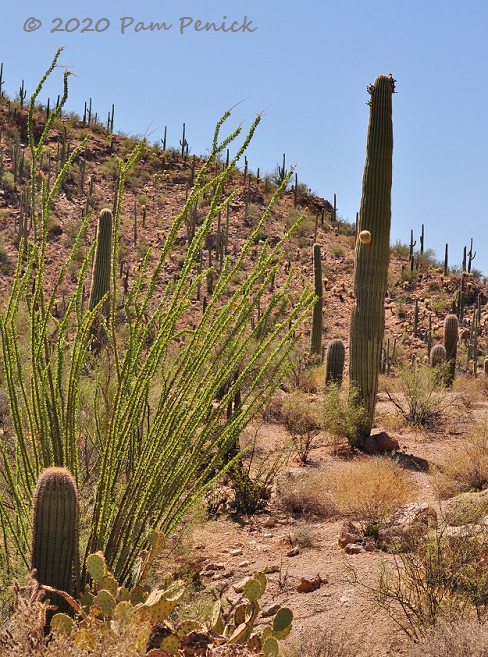
Pipe-cleaner ocotillo and paddle-shaped prickly pear keep the saguaro company, along with other fine-textured, scrubby plants.
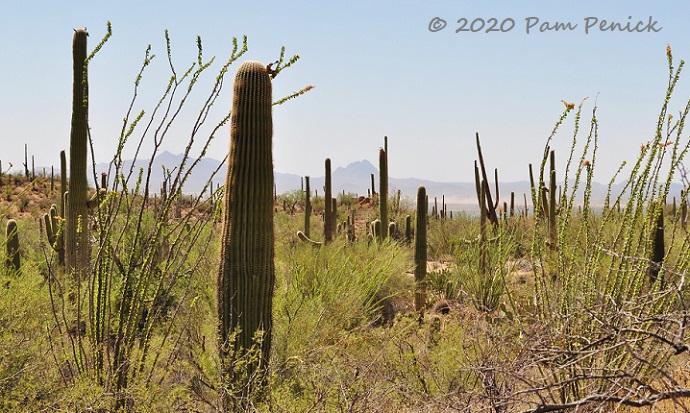
Mountains in the distance make a dramatic backdrop to the columnar cacti.
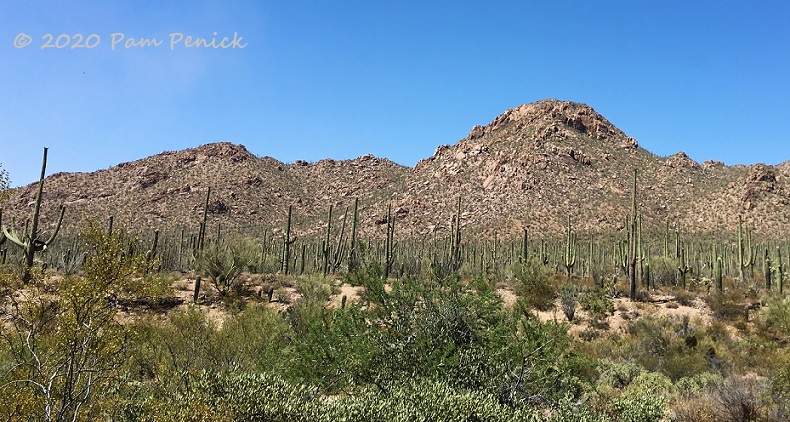
A forest of saguaros
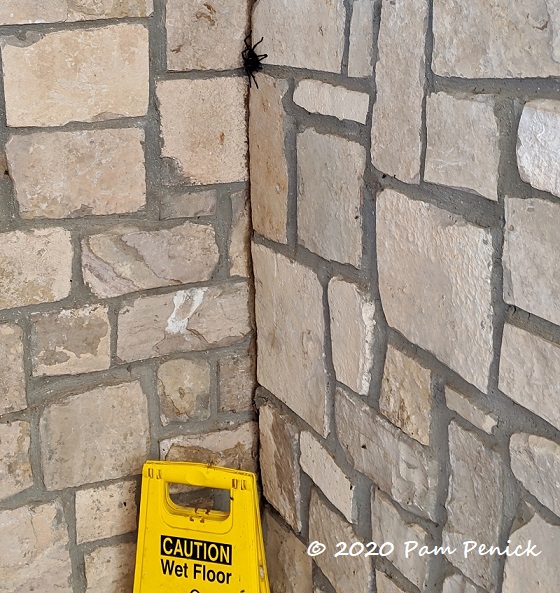
After we left Saguaro, we drove another 5 hours to reach the Texas state line near El Paso. We stopped at the welcome center to use its open-air restrooms and noticed a tarantula on the wall on the way out.
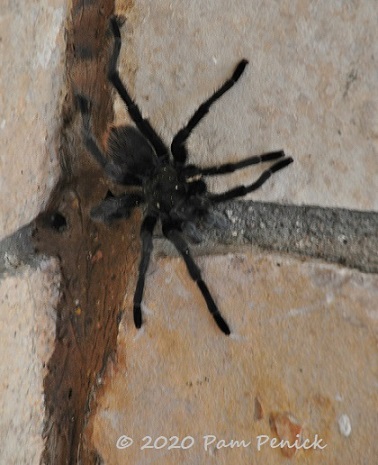
Everything’s bigger in Texas. *shudder*
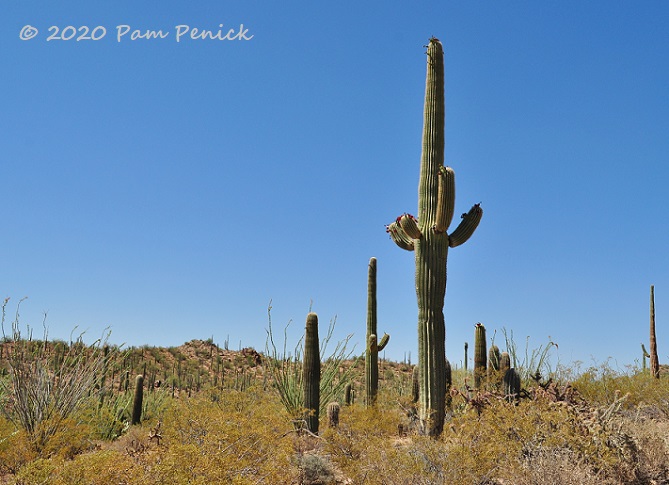
I can’t leave you with a photo of a gigantic spider, so here’s one more of the majestic saguaro. Adios, pardner!
I hope you’ve enjoyed my coverage of our national parks road trip. For a look back at our exploration of Joshua Tree, click here. You can follow the link at the end of that post and work your way through all of the beautiful parks that we visited.
__________________________
Digging Deeper
Come learn about gardening and design at Garden Spark! I organize in-person talks by inspiring designers, landscape architects, authors, and gardeners a few times a year in Austin. These are limited-attendance events that sell out quickly, so join the Garden Spark email list to be notified in advance; simply click this link and ask to be added. Season 8 kicks off in fall 2024. Stay tuned for more info!
All material © 2025 by Pam Penick for Digging. Unauthorized reproduction prohibited.


Pam, it’s too bad there was no one there. When my sister visited us out there, I had taken her out to the western part of the park. There’s a nice little restaurant and a small “sort of” desert zoo. Basically, a prairie dog village and I think a coyote den, which we didn’t see as it was mid-day by then. They also had a raptor demonstration and petting a snake or lizard (can’t remember exactly). Oh well, maybe it wasn’t so bad that it was empty. Anyway, great photos as always. I kind of sorry that the trip is over. I’ve really enjoyed it and thanks for taking us along.
I’m glad to know you’ve enjoyed the virtual return visit, Pam! Yes, it really is just as well that no one was there. We had less social distancing to be concerned with. One day we’ll be able to eat in restaurants again and talk to people, and I cannot wait.
More great reading practice for my son! We will really miss your traveler’s tales, Pam. You’re such a beautiful writer.
Thank you, Julie! It makes me happy to think about your son reading my posts for reading practice. 🙂
Thanks so much for sharing your travels with us, Pam! Road trips are wonderful for making those lasting family memories. I loved seeing all of your beautiful photos, and enjoying those (sometimes) cooler temperatures and gorgeous scenery vicariously.
Thanks for your kind comment, Maggie, and for following along on our park adventures!
Thank you. The lonely cactus was my favorite! So enjoyed all your photos. Well Done. I now want to visit the Saguaro National Park-when we open up again. (love driving trips But Sanitizing everything as we go does not appeal to me). Glad you had a safe trip and wonderful to share it with us at home this year.
I love sharing about national parks, Nicola, and I’m so glad you enjoyed the virtual visits! And yes, road trips are even better when you don’t have to sanitize everything as you go. 🙂
Absolutely loved this tour. I am so happy that you and your family were able to get out and tour around to see some amazing sights.
Me too, Lisa. It was so nice to get away under the circumstances. 🙂